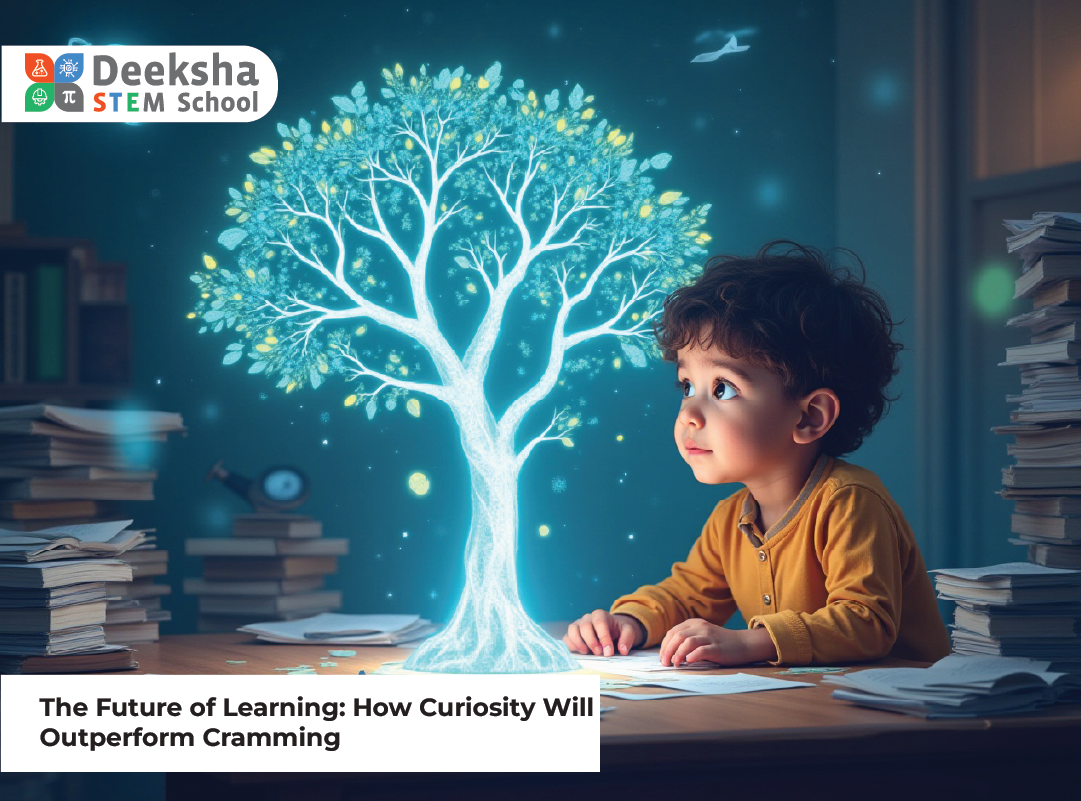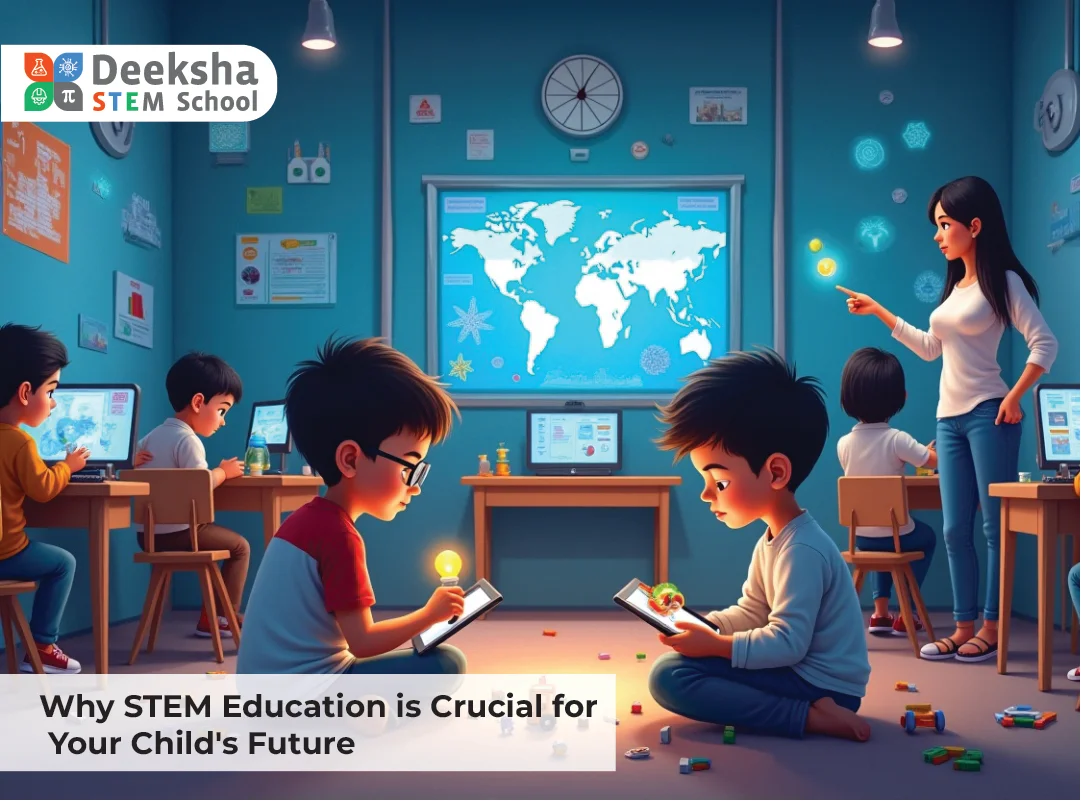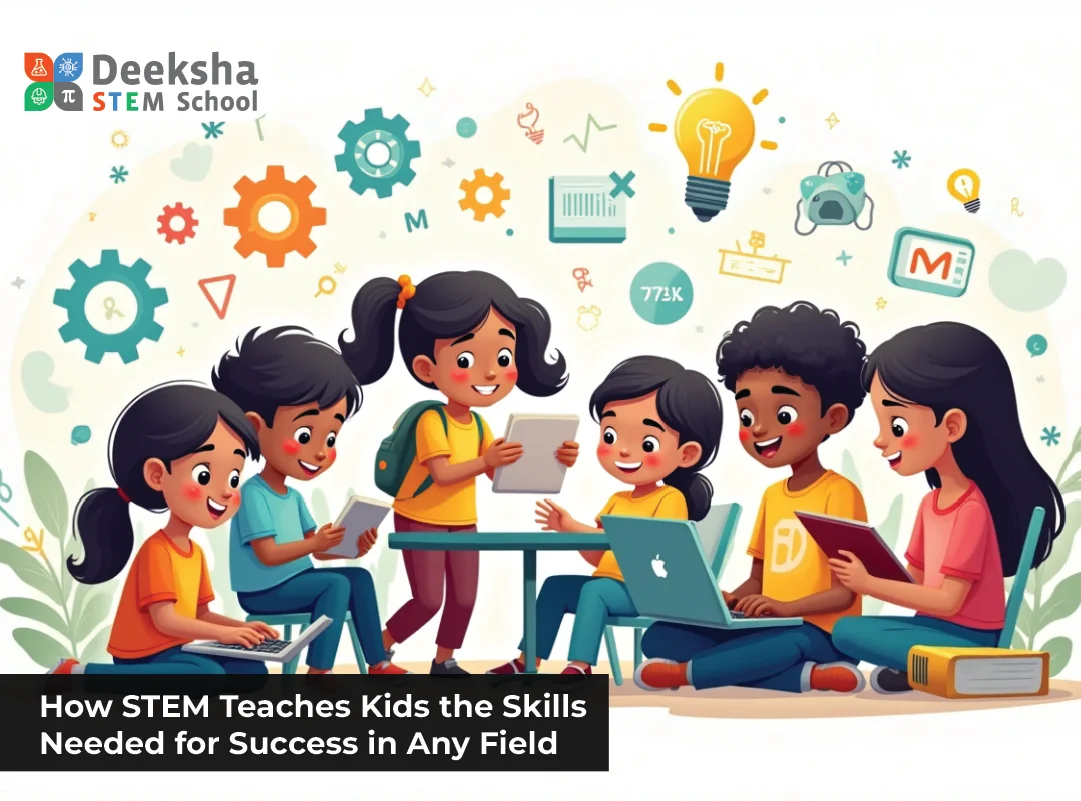The Future of Learning: How Curiosity Will Outperform Cramming

The traditional education system has long valued memorization as a sign of intelligence. Students cram facts before exams, often under pressure, only to forget most of what they’ve learned shortly after. While this method may yield short-term results, it is no longer sufficient in an age defined by innovation, adaptability, and lifelong learning.
In contrast, a curiosity-driven approach to learning is gaining momentum worldwide. It encourages students to ask questions, explore real-world applications, and make meaningful connections across disciplines. Rather than focusing solely on scores, it nurtures a genuine love for learning and promotes higher-order thinking skills that are vital in the 21st century.
At Deeksha STEM Schools, we understand that igniting curiosity in students transforms their entire academic journey. We are committed to cultivating a classroom culture where exploration is celebrated, not suppressed.
Why Curiosity is the Key to Long-Term Learning
Curiosity is the innate desire to understand how and why things work. It drives students to actively seek knowledge and engage more deeply with learning materials. Unlike cramming, which depends on external motivation like marks and deadlines, curiosity fosters a powerful internal drive to explore and create.
| Aspect | Cramming | Curiosity-Driven Learning |
| Motivation | External (grades, pressure) | Internal (passion, interest) |
| Learning method | Passive, repetitive memorization | Active, self-driven inquiry |
| Knowledge retention | Short-term, often forgotten after exams | Long-term, rooted in understanding |
| Creativity and innovation | Rarely encouraged | Flourishes through exploration |
| Classroom experience | Teacher-centered, test-focused | Student-led, discussion-rich |
| Real-world application | Often absent | Strongly emphasized through projects and labs |
Problems with Cramming
Cramming may help students pass exams, but it rarely fosters real learning. The drawbacks are significant:
- Surface-level knowledge: Students memorize answers without grasping underlying concepts
- Stress and burnout: Pressure to retain large volumes in a short time causes anxiety
- Poor adaptability: When faced with unfamiliar questions, students struggle
- Lack of engagement: Learners become disinterested and disconnected from subjects
- No room for creativity: The rigid structure stifles independent thinking
Benefits of Curiosity-Based Learning
A learning environment that champions curiosity reaps long-term academic and personal rewards:
- Deeper understanding: Students grasp fundamental concepts instead of just facts
- Active learning: They participate in hands-on activities, discussions, and projects
- Higher retention: Knowledge acquired through exploration sticks for life
- Greater resilience: Challenges are seen as learning opportunities, not failures
- Boosted confidence: Learners feel empowered to pursue their questions
- Holistic development: Skills like communication, collaboration, and problem-solving are naturally developed
How Deeksha STEM Nurtures Curiosity
We don’t just teach students to answer questions—we empower them to ask better ones. Here’s how we foster curiosity across all grade levels:
- Inquiry-Based Classrooms: Lessons begin with “why” or “how” questions, encouraging exploration
- STEM & Innovation Labs: Hands-on experiments and engineering challenges nurture a maker mindset
- Cross-Disciplinary Projects: Students explore the intersection of science, math, technology, and art through thematic learning
- Self-Directed Assignments: Learners are encouraged to pick project topics based on personal interest
- Technology Integration: Tools like coding platforms, simulations, and VR expand learning possibilities
- Mentorship and Reflection: Teachers guide, support, and mentor students in shaping their own learning journeys
Real-Life Examples at Deeksha STEM
| Program / Activity | How It Fosters Curiosity |
| Robotics & Coding Clubs | Encourages problem-solving and experimentation |
| Science Exhibitions | Provides a platform for research-based learning |
| Literature Circles | Promotes critical discussion and empathy |
| Math Lab Challenges | Makes abstract concepts tangible and interactive |
| Peer Teaching Sessions | Strengthens understanding through collaborative learning |
Tips for Parents to Cultivate Curiosity at Home
Parents play a critical role in keeping curiosity alive outside the classroom. Here are some ways to nurture it:
- Ask questions together: Model inquisitiveness by asking open-ended questions
- Celebrate “why” questions: Reward curiosity even when you don’t know the answer
- Limit passive screen time: Encourage interactive content like puzzles, quizzes, and educational games
- Create a discovery zone: Dedicate a corner at home for books, art supplies, science kits, or building blocks
- Discuss real-world phenomena: Talk about how things work in daily life—like how airplanes fly or why leaves fall
- Encourage exploration: Let your child tinker, fail, and try again without fear
Frequently Asked Questions
1. Can curiosity really replace traditional studying?
While structured study habits are still important, curiosity enhances and deepens learning. It ensures that what’s studied is not only remembered but also understood, applied, and enjoyed. Curious students often perform better because they connect knowledge across contexts.
2. What if my child isn’t naturally curious?
Every child has an area of interest—they may just not have discovered it yet. Help your child explore different subjects, ask about their passions, and provide diverse learning resources. Over time, curiosity grows when children feel safe to express and explore.
3. How does Deeksha STEM balance academic rigor with inquiry?
We combine structured academic excellence with a curiosity-first philosophy. Our curriculum meets board standards while incorporating project-based learning, critical thinking modules, and exploration labs.
4. Is curiosity enough for competitive exams like NEET or JEE?
Absolutely. Students who understand concepts thoroughly through curiosity perform better in problem-solving and critical analysis—key components of competitive exams. It also reduces reliance on rote learning and builds exam confidence.
5. How can I align curiosity with academic goals?
Look for creative ways to connect personal interests to syllabus content. For instance, if your child enjoys sports, explore the physics behind motion. If they love animals, connect biology topics to wildlife behavior. This alignment builds motivation and depth.
Final Thoughts
In the age of information, simply knowing facts is no longer enough. The ability to question, synthesize, and innovate is what sets successful learners apart. Curiosity is not just a personality trait—it’s a skill that can be cultivated through the right environment and guidance.
At Deeksha STEM Schools, we are proud to lead the shift toward a curiosity-driven future. We believe that when students are encouraged to ask more and memorize less, they don’t just learn better—they live better.
Visit our campuses at Bannerghatta Road, Judicial Layout, Kengeri, and Vidyanagar to see how we’re shaping tomorrow’s thinkers, creators, and explorers—one question at a time.




